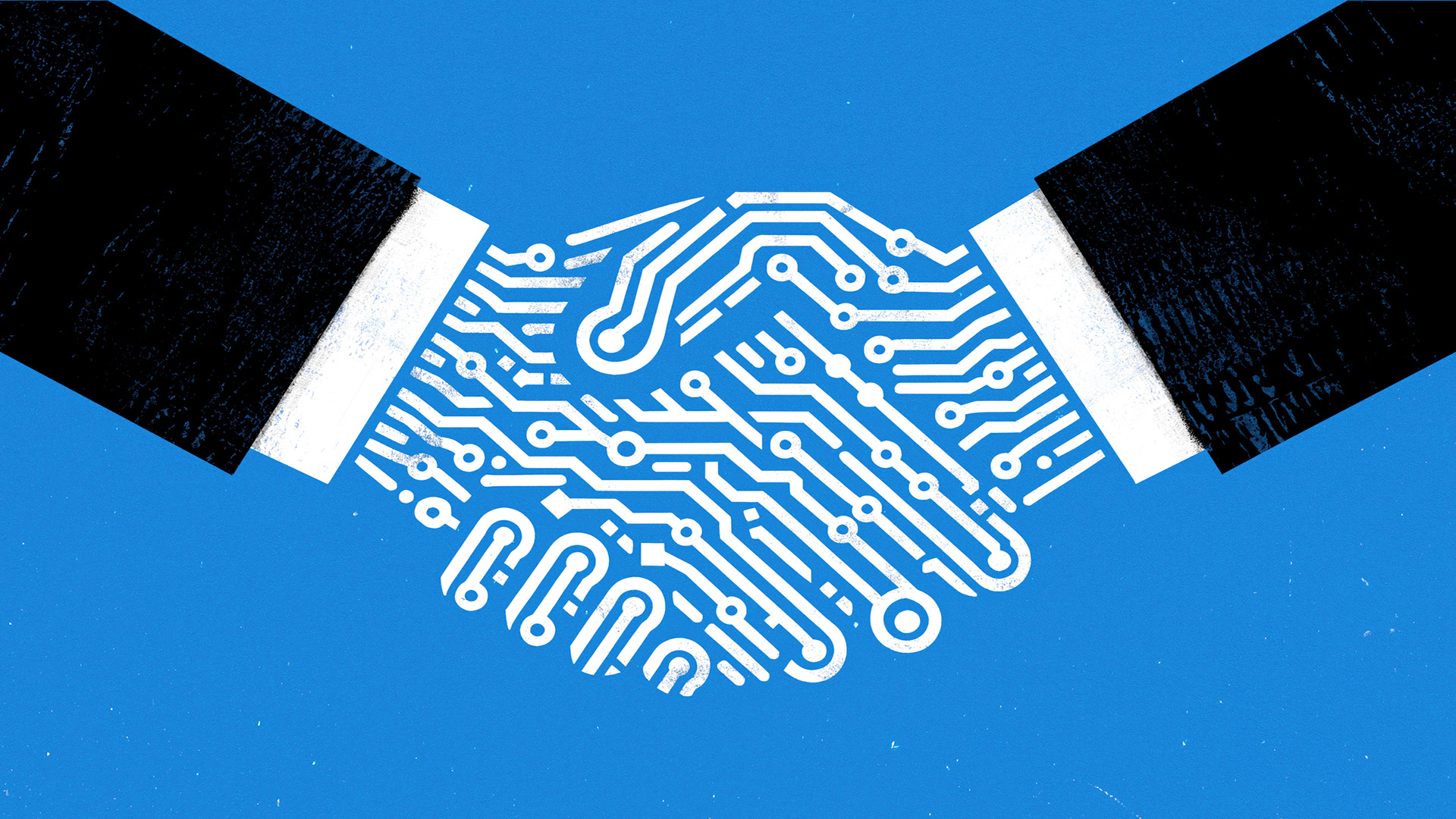The pros and cons of AI coding in the IT industry
Businesses must weigh up the benefits, challenges, and key considerations when using generative AI coding tools


It wasn’t long ago that the idea of generative AI producing usable code seemed like a near-to-medium-term goal, with early reactions to the likes of using ChatGPT for code including Apple banning internal use of the chatbot and Stack Overflow barring its outputs from the popular coding community.
Much has changed in the intervening years, with AI now rapidly transforming IT roles. According to Stack Overflow’s 2025 Developer Survey, the majority (84%) of surveyed developers use or plan to use AI in their coding process, up from 76% in 2024.
And it isn’t just the development community embracing AI; employers are now demanding AI skills when filling new positions, with 65% of digital leaders surveyed by Nash Squared saying they would choose an AI-enhanced developer with just two years of experience, compared to one with five years of experience, but no AI skills.
The digital consulting company Publicis Sapient, which has 20,000 employees around the world, is using generative AI tools to help solve higher-order problems like requirements generation, non-functional testing, compliance verification, and service introduction, alongside more foundational elements like unit testing, code development, design documentation, and functional testing.
“We have invested in AI for over ten years,” says Pinak Kiran Vedalankar, group vice president of technology at Publicis Sapient.
“However, the real transformation came with the recent generative AI revolution, with deep learning becoming a pivotal point. As AI-powered automation gained momentum across industries, we were early leaders in applying Gen AI to accelerate the software development lifecycle.”
And what began as a breakthrough for its teams has now become a proven blueprint for Publicis Sapient clients, too, helping them scale generative AI across their organisations to, “drive exceptional results with unmatched speed and quality,” says Vedalankar.
Sign up today and you will receive a free copy of our Future Focus 2025 report - the leading guidance on AI, cybersecurity and other IT challenges as per 700+ senior executives
Softwire, a UK-based technology transformation consultancy, also began using AI coding tools when they first became available. And it quickly realised that they could have huge benefits for its customers, but that they also required clear usage policies and guidelines.
“At Softwire we started using AI software development tools as soon as they began to appear on the market. We realised that we very quickly had to move to develop a policy around what circumstances they could be used in and what security and privacy measures needed to be taken,” says Zoe Cunningham, director of software consultancy at Softwire.
“We also talked to all of our clients to see how using AI coding tools would impact them and approach our use of tools on a client-by-client basis. Now that we are more confident with the landscape of AI tooling, we are rolling it out more widely across the whole company.”
Boosting productivity
In many sectors, clear use cases for generative AI are still being explored and assessed. In software development, users have been quicker to take up AI tools, even as some businesses continue to doubt the benefits they bring. Others, however, argue that AI-generated code development is already proving its worth.
“We have seen a number of benefits from introducing AI into our coding, including productivity gains for senior engineers,” says Frankie Woodhead, chief product and technology officer at Thrive. “This is due to AI helping experienced developers move much faster, clean code better and greatly reduce time spent on boilerplate and repetitive tasks.”
Thrive, which provides technology outsourcing for mid-level IT companies, is also using AI tools to generate user stories and criteria, which provides product and engineering teams with a head start on alignment. Elsewhere, generative AI is used for drafting wikis and Slack prompts, providing teams with updates and reminders.
“We’ve made internal knowledge much easier to scale,” says Woodhead. “And on a customer level, we have deployed AI to help answer common customer queries instantly, reducing first-response times and letting the support team focus on more complex issues.”
Saarthak Jain is a full-stack software developer at Abnormal AI, a cloud-based email security company, and he has seen similar improvements in productivity, whilst also being able to optimize certain processes that were previously taking up too much time.
“The adoption of AI coding tools has led to significant improvements in development and iteration speed across our organization,” Jian tells ITPro. “By leveraging AI, we have been able to optimize our workflows and enhance productivity, yielding substantial time savings and elevating the quality of our engineering efforts.”
Three AI coding benefits for clients
While individual developers and their teams have benefited directly from the use of AI tools, the impact for clients of IT companies has also been significant, with Vedalankar outlining three major benefits:
- Dramatic productivity gains:
“Our AI platform, Slingshot, has doubled productivity (per feature team) while reducing end-to-end software development lifecycles by up to 40-50%. Our generative AI powered factory model has delivered measurable efficiency improvements across the entire SDLC, allowing teams to accomplish significantly more with the same team members.” - Superior code quality:
“Our AI-assisted code reviews and intelligent workflows have strengthened reliability and resiliency in ways traditional approaches couldn’t match. We’re seeing fewer critical bugs and significantly improved overall code quality, translating directly to more stable and maintainable systems. This enhanced reliability has substantially reduced risk across development projects, particularly during large-scale transformations.” - Accelerated time-to-market:
“Perhaps most valuable to our clients, generative AI integration has dramatically sped up software delivery and modernization processes, reducing the time needed to launch new features and applications. What’s particularly exciting is that we’re just at the beginning of this AI journey. If these are the benefits we are unlocking with just a few years of experience in AI, the future potential is truly remarkable.”
Security and accountability
Although now being used by the majority of programmers, AI tools were not universally welcomed upon their launch, and it has taken time to move beyond the initial doubts and suspicion surrounding generative AI. It’s important to note that risks remain when using AI-generated code, which organizations will have to mitigate.
“Integrating AI into our coding processes was initially met with skepticism, both within our organization and across the industry,” Jain explains. “Concerns included AI's ability to comprehend complex codebases, the potential for generating buggy code, adherence to company standards, and issues surrounding code and data privacy.”
However, since the launch of the first generative AI tools at the end of 2022, Jain says that the rapid evolution of AI technology’s implementation has alleviated many concerns, with features such as codebase indexing and secure training protocols addressing major concerns.
“These advancements have enabled AI tools to understand code context, follow company standards, and maintain robust security measures,” Jain tells ITPro.
Nevertheless, security and accountability are also major factors for any IT company to consider when looking to use AI as part of the development process, and research continues to show glaring vulnerabilities in AI code. There are certain steps that simply can’t be replaced by AI.
“We can't automate accountability, so human review remains central to our security and quality practices. There always needs to be a human in the loop,” says Gregor Stewart, vice president of AI and machine learning at SentinelOne, an enterprise cybersecurity provider. “But this is the same if you are working with a human developer. Machines like people are flawed, so there needs to be checks and balances in place. However, using existing AI tools, we are now able to give human reviewers several different near expert perspectives on the code they look at.”
Beyond this, Stewart says that education and information sharing is “vital”. And SentinelOne has a dedicated evangelist, who runs the company’s ‘AI-enabled Developer Program’.
“He develops enterprise-wide training material and policies, team, and leader-level mentoring,” explains Stewart. “As well as hosting monthly online recipe sessions, and coordinating specific initiatives.”
Like SentinelOne, Thrive has retained human oversight within its AI coding pipeline, and has implemented mandatory peer and senior engineer reviews for all AI-influenced contributions.
“We ensure that there is always a human layer. Further, we have deployed an automated security tooling for dependency management, secret detection, and vulnerabilities,” Woodhead explains. “Transparency is essential, and our Slack bots and documentation workflows keep architectural decision records current and visible. It is important to have a workplace culture which encourages the use of AI, but as a learning tool, not a crutch.”

Dan Oliver is a writer and B2B content marketing specialist with years of experience in the field. In addition to his work for ITPro, he has written for brands including TechRadar, T3 magazine, and The Sunday Times.
-
 Apple M5 iPad Pro review
Apple M5 iPad Pro reviewReviews Still rocking the same design, but inside it's all change -- and that is what makes the M5 iPad Pro so good
-
 Nozomi Networks eyes channel growth with double executive appointment
Nozomi Networks eyes channel growth with double executive appointmentNews Matthew Cowell has been named as VP of strategic alliances, while Tyson Gerhold becomes VP of global partner and channel sales